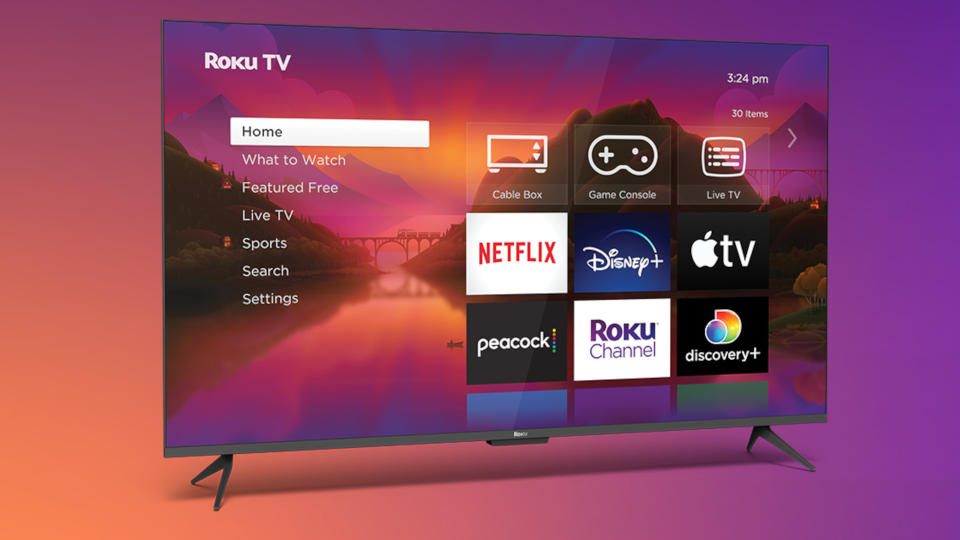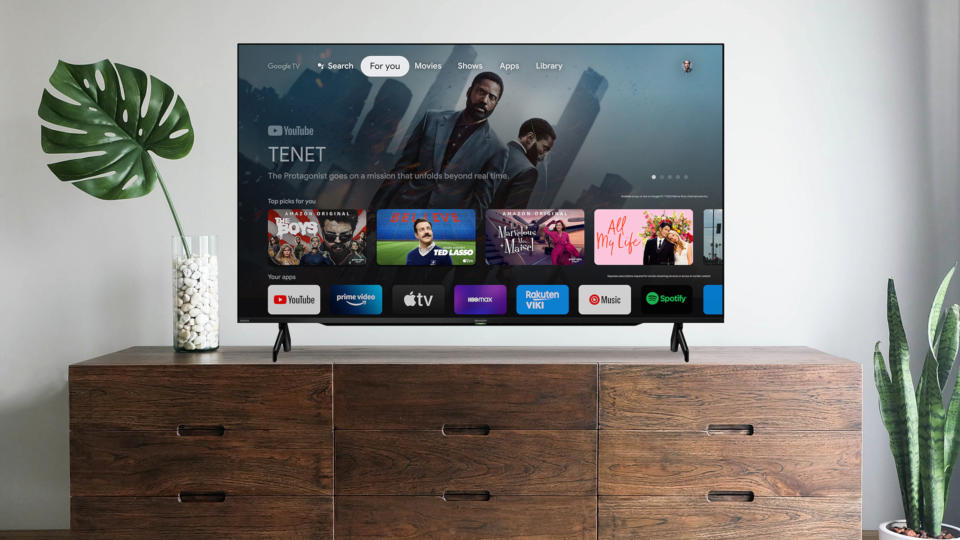Roku vs Google TV: which OS is best for your next smart TV?
When you buy through links on our articles, Future and its syndication partners may earn a commission.

The Roku vs Google TV bout is one that will see two of the very best TV interfaces, measuring everything from ease of use and simplicity to the myriad of features they present. While Roku might be at the top of its game with over 80 million users to date, Google TV is not far behind in adoption as both TCL and Hisense leverage the Android TV platform for their own TVs.
But, which do you choose? That's the most important part, finding the right streaming device and TV interface that meets your every need, allowing you access to your favorite streaming services and assorted apps. Do note that choosing Roku vs Google TV locks you out of popular TV brands, including Samsung, Amazon, and LG TVs.
With that knowledge in hand, going team purple definitely has its benefits, like access to the beloved Roku City and its flurry of Easter eggs. Problem is, you'll most assuredly be inundated with ads and find its opt-in privacy policies a bit worrying. That's why Google TV is marked as a valiant contender, one with tons of personalization and potential.
With our years of testing TVs, streaming devices, and more, you can trust us to find the right TV interface for you. It not only depends on the platform and software itself, but the hardware is also immensely important and should go into your decision-making, including the best Google TVs and the best Roku TVs.
Roku vs Google TV: the case for and against Roku

With many years at the top of the TV smart platform ecosystem, Roku needs no introduction. According to Hub Entertainment Research (via Variety), as of late 2023 Roku sits behind Samsung’s Tizen interface with a 48 percent share of the TV OS marketplace, proof alone in its outward reach and usability.
The interface now exists most widely within dongles like the Roku Streaming Stick 4K, due to TV manufacturers moving away from the OS in favor of self-built iterations or competitors like Google TV. Roku’s simplified user interface (UI) and app selection is a major draw, but its hindered by several compromising elements, main among them being its limited underlying controls and personalization.
“With the Google chassis, we have more control over how we change the features and what we put into it, and slightly less control over the Roku chassis. Since we wanted to bring lots of new technology out, it was just easier for us to do all these high-end features and new things on the Google chassis.”
Roku’s severely lacking control scheme deals primarily on the manufacturing side. In an interview with CNET, TCL’s vice president of product marketing and development, Scott Ramirez, explained why the company moved away from Roku’s interface in favor of Google TV, claiming that “it was just easier for us to do all these high-end features and new things on the Google chassis.”
Beyond that, even the best Roku TV is met with derision as personalization is swept by the wayside in favor of Roku’s heavy-handed advertising. This particular drawback can be felt most especially the moment you turn on your Roku TV or streaming stick, with the entire interface awash in something completely new that it’s trying to sell you.
Such invasive ads, which diminish your TV’s overall personalization by taking over the art and background of the UI, are set to become even more of a nuisance on Roku products. Add to that several missing apps from its storefront, of note Twitch for one, and Roku seems less and less ideal of an OS worthy of adoption.
Roku vs Google TV: the case for and against Google TV

Launched on TVs initially in 2020 alongside its rebranded Chromecast with Google TV, Google TV uses the Android TV OS backbone to bring users access to a wide variety of different apps and services. It exists across a wide gamut of TVs from the likes of Sony, TCL, Hisense, and many more.
Google TV sports an easy-to-use interface and an extremely streamlined setup that logs into most of the apps you use via Google instantaneously, making it far simpler and quicker for you to leap into that next episode of Netflix’s “3 Body Problem” from the moment you buy a new TV. There’s few (if any) major apps missing from the storefront, which is a major plus for users of Twitch and the plethora of other services missing from Roku’s OS.
There are also several helpful interactive features that lets Google TV stand out not only from Roku but many of its other competitors. The biggest draw here is the “Top picks for you” rail at the very top of the interface, allowing you instant access to continued show episodes or selected content that meets your general watch history.
On the more device interaction side, Google TV is also capable of working in tandem with other Google products via Google Assistant, bringing us ever-closer to our smart TVs becoming the center of the smart home. Any of your smart devices paired into the Google Home chain have handy interactive capabilities with your Google TV, making your smart TV even smarter thanks to Google.
The de facto victor
When you look at the best Google TVs, you're not only getting quality performance — oftentimes even at an ample price (looking at you Hisense U7K) — but you also net some powerful features through its interface. Having Google as the literal backbone of you TV gains you access to a wider net of functionality and personalization most of which is just not available on other TV interfaces.
While Roku certainly was at the top of its game for many years, its nosedive into ads and interactive shopping has paved the way for Google to rise up in its place. Very few people (if any) want to see a heavy amount of ads laid out across their TV interface, so much so that it takes up more than most of the screen's real estate.
Still, the decision for your next TV really comes down to your overall needs and budget. Roku's latest Plus Series 4K QLED is quite the bargain at $600, a 65-inch display we gave nearly a perfect score hindered only by its 60Hz refresh rate and nonexistent HDMI 2.1 ports. The interface is certainly usable, but also isn't for everyone.
Take it from us, trusted TV reviewers with years of experience under our belts — Google TV is a new major player in town and it’s simply hard to beat its myriad pros in the face of limited competition.
